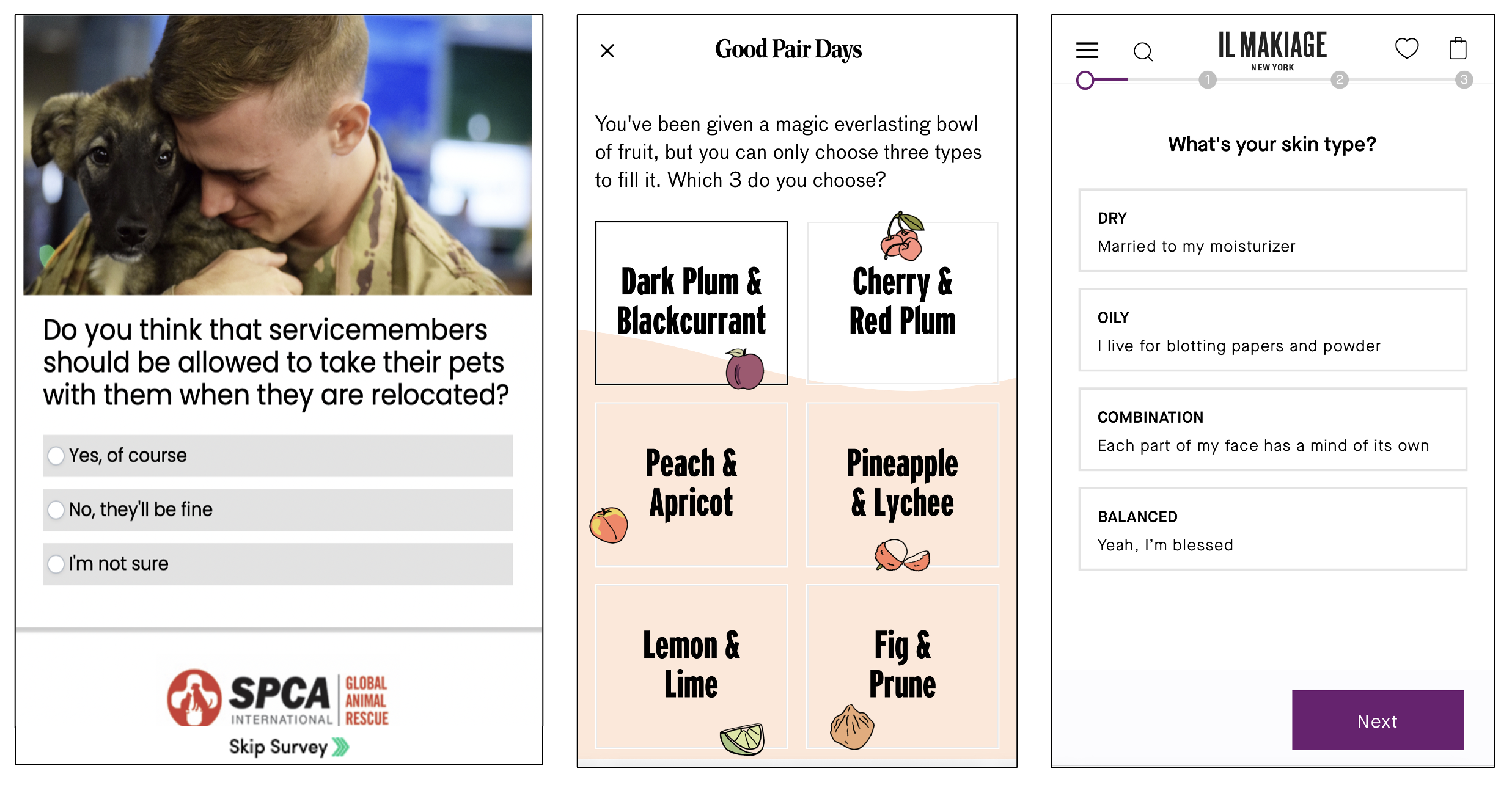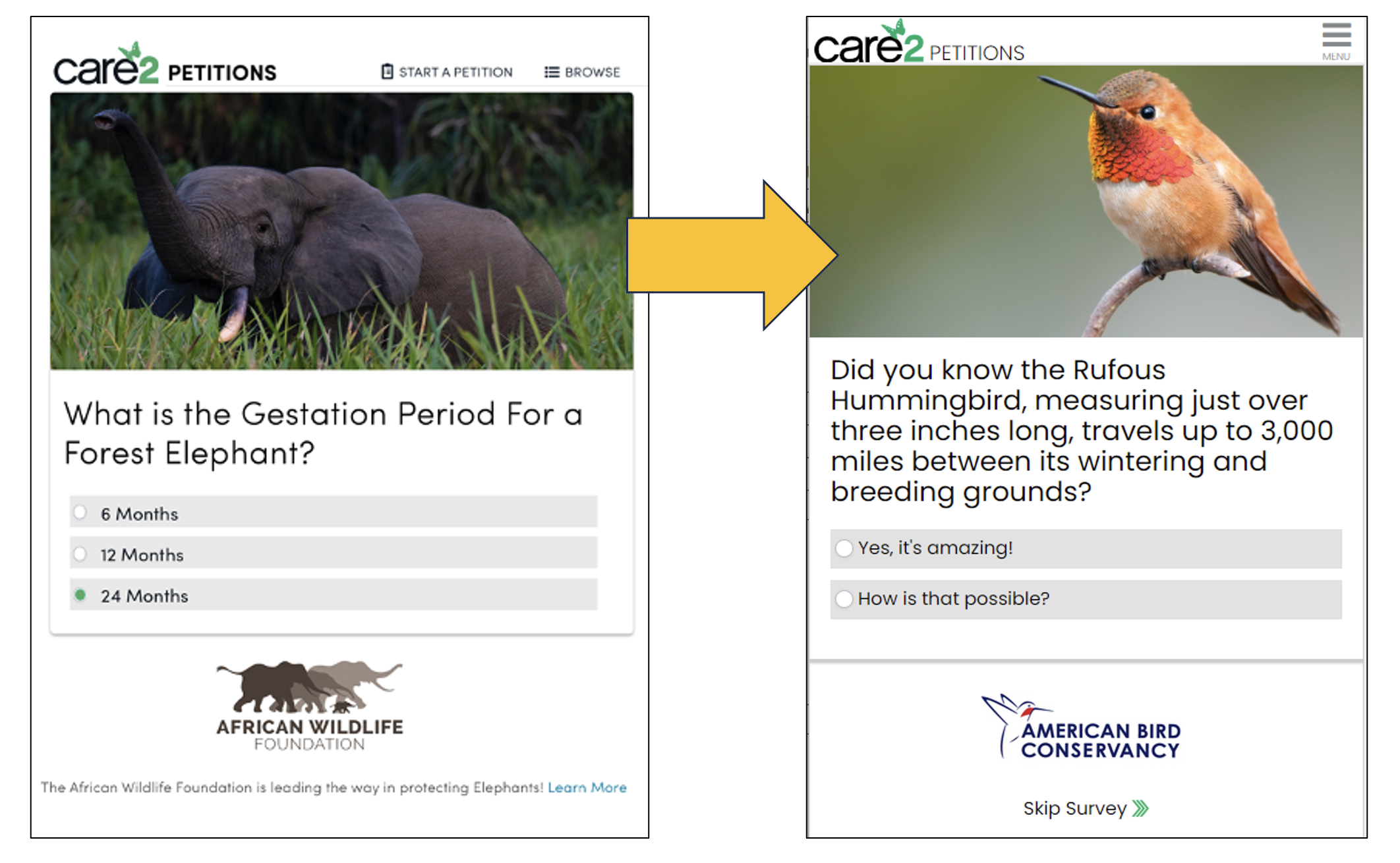If you’re one of the millions of people who took the famous “What City Should I Live In?” quiz from Buzzfeed, you know the irresistible power of interactive content online!
We are compelled to click on things that tell us about ourselves, educate us, and speak to our current interests. It’s no surprise that so many content marketers use interactive content pieces like polls, opinion surveys, and quizzes as top-of-the-funnel content for digital lead generation. You might have seen this in action when taking an Instagram quiz to match your foundation colour, or to determine which flavour of coffee is best for you.

At Care2.com, we have millions of members visiting our pages, responding to appeals, fundraising campaigns, and advocacy actions for good causes. We always want to know how to improve messaging to benefit conversion to petition signing or donation—especially when research indicates that interactive content requiring the audience to participate is two times more likely to convert people to an action than passive, static content!
We knew we were the perfect platform to answer the question: How can marketers and fundraisers in the nonprofit sector take advantage of interactive content to improve engagement and boost donations?
Care2 Cultivate
We built a platform called Care2 Cultivate that serves up interactive content like quizzes, surveys and polls to people who visit Care2.com. The content is co-branded and co-created with our nonprofit partners and is shown to visitors who are already in that charity’s database. The goal was to understand how nonprofits and charities could improve the messaging they’re using with supporters and donors who already have an affinity to their cause.
After completing the engagement, the supporter would be taken to a website link on the charity’s site or a donation opportunity. We could track everything and see what messages are receiving interaction and click-throughs.
More engagement and more online donations
As we launched, we soon had millions of engagements, and even more quickly learned a lot about the content that performed best. One thing that surprised us was that the more challenging the question, the less engagement we saw. People seemed uncomfortable engaging with a quiz or poll when they didn’t already know the answer.
Content that challenged or confronted an existing belief also received less interaction. We were surprised that the easy quizzes that we considered “less serious” were outperforming the ones we considered more educational.
Why? Research suggests that people experience a dopamine rush of pleasure when reviewing information that already supports their beliefs. One term for this is “myside bias.” We found confronting people with information they don’t already have buy-in for was less effective in generating conversion to an action.
One of the main reasons content marketers use interactive content is that it serves an audience’s natural “desire to be educated.” Our content experiments show that for many people, that really means, “desire to be told more about something I already care about or already know a little about.”
So, with these findings in mind, we changed up our messaging, focusing on the existing values of the supporter, and educating them without putting them in a situation where they would make an error or feel uncomfortable.
Here’s two examples.

Rather than ask people a question where they would have to give us a number they may not know, we told them a remarkable statistic and asked them how they felt about it. The elephant quiz received far less engagement than the hummingbird opinion survey.
Flipping how we thought about messaging was enormously effective!
We found three types of engagements received the most attention, and all they center the donor or the supporter, allowing an opportunity for them to raise their hand in support of what they believe in.
The Experience Poll/Survey
Allows supporters to answer based on their personal values
The Education Poll/Survey
Reveals interesting facts or new information the supporter wants to know
The Opinion Poll/Survey
Asks a supporter how they think or feel about an issue they care about
So now, the big question: Does interactive content that’s targeted to people who you know already have an affinity to your cause result in more conversions?
Yes, and here’s one intriguing example!
The Society for the Protection of Animals International (SPCAI) ran content on the Care2 Cultivate platform for a year. SPCAI were able to compare people who interacted with the quizzes and polls to those who did not. They found experiencing the interactive content boosted the donation rate by 64% for active individuals on their email list (and 184% for individuals who had been listed as inactive).
The measurable results weren’t just confined to online donations.
African Wildlife Foundation directly tied reactivation of over 140,000 supporters previously listed as lapsed or inactive to running Care2 Cultivate engagements for 12 months. We shared a full case study with these organizations and others at NTEN’s Nonprofit Technology Conference this year and are sharing even more data at Xlerate Day this October.
Your supporters want to interact with content that is valuable, urgent, or intriguing – to them. It’s worth testing your messaging (like we did!) to see what best speaks to the interests and values of your supporters and donors.



COMMENTS